Struggling to gather intel on stealthy healthcare competitors? Not sure where to start digging? You’re not alone. As Christopher Link, Senior Competitive Intelligence Analyst at GEICO, puts it:
“Data on competitors is always the absolute trickiest thing.”
But don't worry – we’re here to help. This guide will arm you with a step-by-step process to uncover everything you need to know, then transform your raw data into insights your team can act on.
You'll learn how to:
- Uncover vital details from databases, news, financials, and more.
- Get candid perspectives from customers and colleagues.
- Analyze competitors' web strategies and metrics.
- Identify trends and craft focused insights.
- Package intelligence for easy absorption.
Now, let’s dive into the five steps that will make you your team’s most trusted advisor on the competitive intelligence in healthcare landscape.
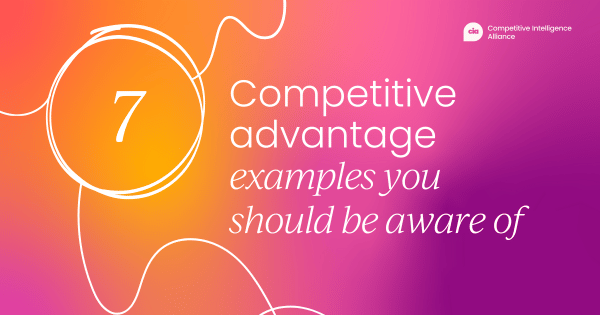
Step one: Tap into healthcare databases and financials
When gathering intel on competitors in the healthcare tech space, you can’t always rely on their websites and press releases alone. Players in the sector might not have much of a public presence.
So, where can you go to dig up info on these tight-lipped companies?
- American Hospital Association and Centers for Medicare & Medicaid Services (CMS)
- SEC filings and tax documents.
- Healthcare news aggregators.
The American Hospital Association and CMS
Start with reputable healthcare databases to build your foundation for competitive intelligence in healthcare.
The American Hospital Association and Centers for Medicare & Medicaid Services (CMS) offer a treasure trove of structured data on hospitals, clinics, and payers.
This can give you a bird’s-eye view of competitors’ market penetration, service offerings, and more. You’ll get the hard facts on their customers, revenues, locations, and other vital signs.
SEC filings and tax documentation
Don’t forget to scour any publicly available financial statements as well. For newer competitors, you can get the scoop on their finances by digging into SEC filings and tax documents. These can reveal:
- How quickly competitors are growing.
- Where they spend money.
- How they’re positioned for the future.
General healthcare news
While you’re spelunking for structured data, be sure to keep tabs on healthcare news too.
Industry publications, news sites, and blogs can provide helpful context around competitors' moves and market landscape shifts. They often interview execs and highlight new partnerships, product launches, and more.
• Leverage healthcare-specific databases for competitor stats and profiles.
• Check SEC filings and tax docs for financial insights on public players.
• Monitor news outlets and publications for real-time industry updates.
With these pieces in hand, you can start assembling the full competitive puzzle.
Step two: Gather field intelligence
In addition to external data sources, make sure to collect insights from internal teams. Your colleagues on the front lines often have invaluable perspectives to share.
Start by setting up a simple win/loss survey for the sales team. Even if the data is imperfect, learning why deals were won or lost can reveal competitor strengths and weaknesses.
Even a few multiple-choice questions sent after each deal can help you uncover trends over time.
Just remember to take this intel with a pinch of salt. As Christopher Link points out…
“I know that 50% of the information on there is probably wrong. I live with that, I put that caveat out there. But at least . . . sales sees they have an input, it goes into what we’ll call my ‘black box’, and there’s an output. They can at least see we’re talking about things, we’re thinking about things, and there’s something going on.”
Even a “rudimentary” win/loss program adds value by prompting dialogue with sales. And in healthcare, customer conversations must be approached sensitively. Clinicians are often stretched thin, so respect their time and role in patient care.
Talk to customers directly
Customer conversations are another prime source of intel. Schedule calls or informal chats with clients to learn about their pain points and how they compare you to competitors.
This gives unique insight into how you’re perceived and where competitors may be falling short.
Don’t forget to tap into the expertise of your internal network too. Host brainstorming sessions to pick colleagues’ brains on competitors, or pull them aside for quick chats to gather anecdotes and impressions.
You’ll be amazed at the nuggets of insight you’ll find.
• Implement a streamlined win/loss survey for quick sales feedback.
• Have candid conversations with customers to learn their thoughts.
• Lean on your network’s collective knowledge through informal chats.
Capturing insights from the field ensures your competitive intelligence in healthcare analysis isn’t just theoretical. You’ll have real examples of competitors in action from trusted observers to complement your external data.
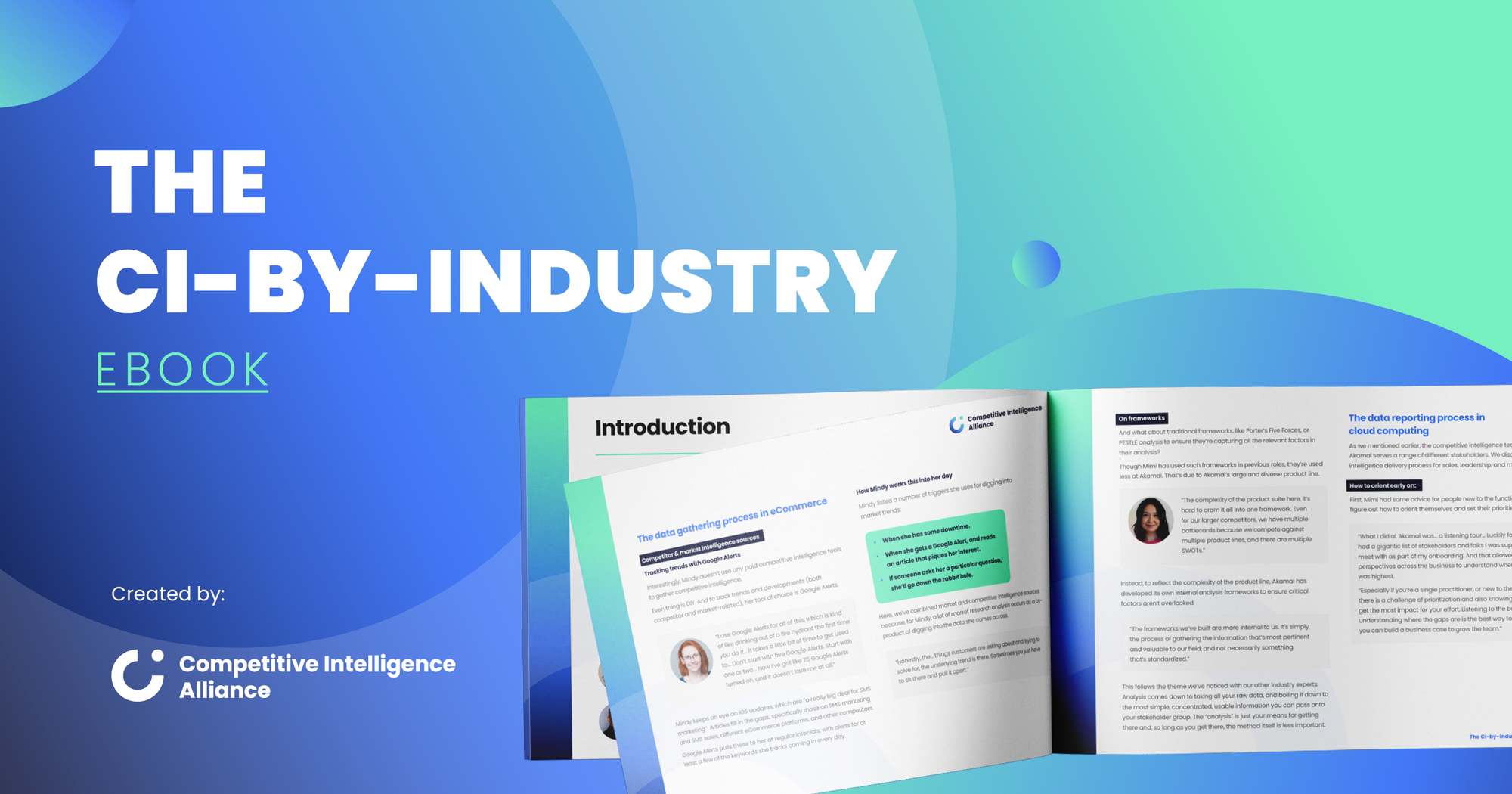
CI-by-Industry eBook
Download your copy to learn...
- 😰 Why field intelligence can be dangerous, and how to use it the right way. (Page 24)
- 🙅♂️ Why you should think twice before having reps from this team on a win/loss call. (Page 24)
- 🤖 The truth about automation, and how much time tools can really save you. (Page 22)
- 🤯 The surprising key skill every one of our industry experts said was crucial for CI success. (Page 66)
Step three: Analyze your competitors’ digital presence
Thanks to the internal and external data sources you’ve dug into already, you’ll now have a much clearer picture of who your biggest competitors are.
While they’re unlikely to lay out the nitty-gritty of their market strategies online, your competitors’ digital presence offers clues as to their positioning, priorities, and performance, so take the time to thoroughly analyze their websites, paid advertising, and web traffic metrics.
SEO and SEM metrics can prove invaluable
For competitive intelligence in healthcare, SEO and SEM metrics can prove invaluable.
If you study how your competitors optimize their sites for searchability through a competitor SEO analysis, you’ll be able to infer what content they’re targeting.
A tool like Semrush, Ahrefs, or Moz will enable you to do this and check out their backlink profiles to gauge third-party associations and partnerships.
Next, audit their SEM and paid advertising strategies. See what keywords they’ve bid on and how much they’re spending. This reveals the areas they’re aggressively trying to rank for. Use tools like:
- Spyfu
- Semrush
- The Facebook Ad Library
Keep an eye on your healthcare competitors’ overall web traffic and engagement metrics too. It’s a great idea to track growth trends over time using services like SimilarWeb.
Sudden surges or drops in traffic could signal new product launches, marketing pushes, or other events.
• Audit SEO strategies to infer goals and desired associations.
• Monitor SEM approaches to see where time and money are focused.
• Track web traffic metrics to identify inflection points.
Evaluating how competitors show up digitally gives a holistic view of their market activity beyond product releases and news. The time you invest in this strategy will pay great dividends in the long run.
So, in healthcare CI, where competitors may be deliberately quiet, SEO/SEM analysis is essential for spotting hidden investment areas.
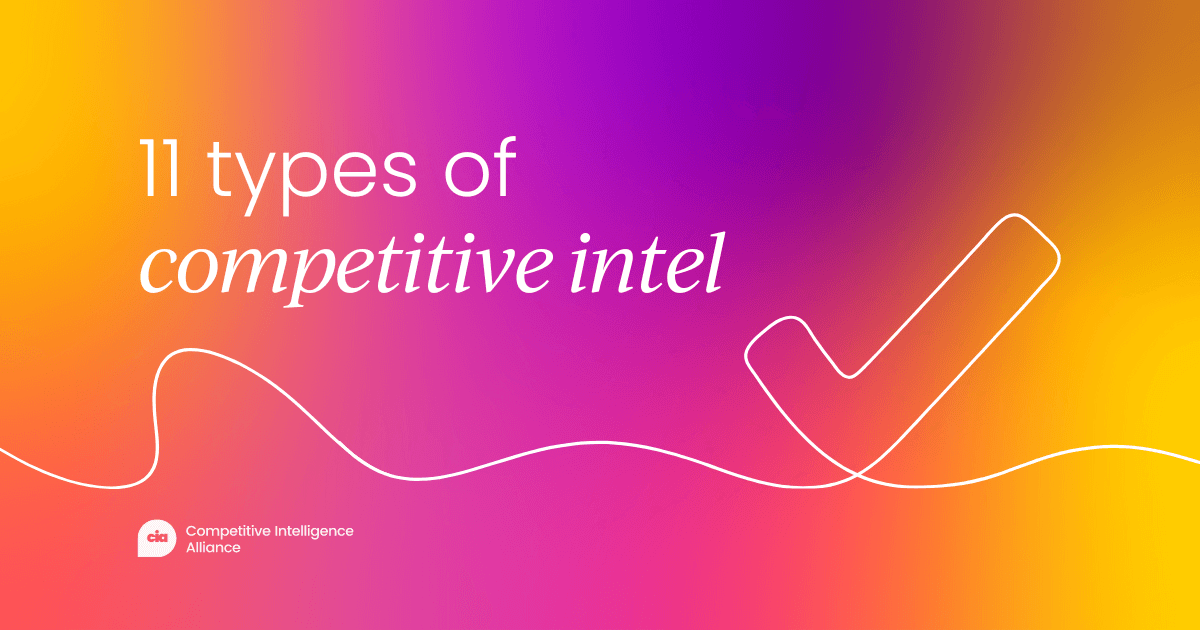
Step four: Turn data into insights
Now you’ve gathered a wealth of data from third-party sources, your internal teams, and the digital realm, it’s time to synthesize everything into meaningful insights.
As always, when sharing competitive intelligence, it’s vital to avoid overloading your stakeholders with data, so ensure you translate the details into concise, relevant, and actionable insights.
Use visual formats to share insights
A good first step is getting structured data (for example, financials and hospital utilization rates) into aggregated dashboards and visualizations.
Platforms like Tableau and Power BI are perfect for this. Spotting trends in the visuals can reveal rising competitors, changing hospital budgets, and more.
But don’t forget to layer in qualitative data too. Those tidbits from news articles, surveys, and conversations add crucial context. Weave these together with statistics to form a narrative about competitors’ moves and marketplace shifts.
Tailor insights to their recipients
Most importantly, make sure the insights you glean are tailored specifically to individual stakeholders. Leadership wants clear strategic implications. Sales needs actionable talking points. Get crystal clear on what each audience needs from you and tailor your intel accordingly.
• Aggregate structured data into dashboards to identify trends.
• Synthesize with qualitative info to build a holistic narrative.
• Tailor key takeaways to the specific needs of each stakeholder.
The real goal is to distill all the data into its most useful essence for key audiences. Avoid throwing out facts without conclusions.
Doing the legwork to connect dots saves them time and deepens the value your CI function delivers to the border organization.
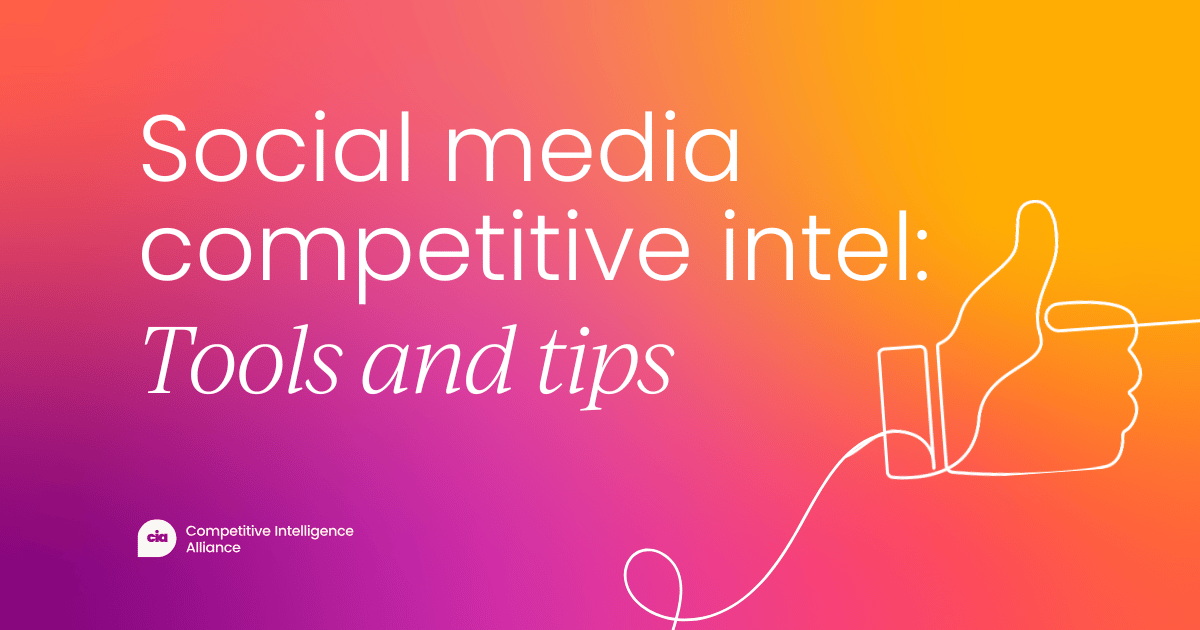
Step five: Package and deliver intelligence
Your competitive insights will only be effective if stakeholders actually engage with and act upon them, so you’ll need to put in the work to make sure your intel is easy to digest.
For sales, create simple yet thorough battlecards that reps can reference in competitive situations. These should essentially be summaries of your competitive differentiation vis-à-vis each competitor. Be sure to provide links to data backing up your findings to secure some bonus credibility.
For leadership, craft succinct presentations focused on conclusions, recommendations, and next steps. Visuals like graphs and charts will help you convey key points fast. Charts and graphs might not sound very exciting, but as Christopher Link points out:
“My job isn’t to give [leadership] things that are fun. It’s to give them things they can work with.”
For the rest of the organization, it’s a great idea to share competitive reports quarterly or monthly to keep everyone updated on shifts in the competitive landscape. Be sure to lead with high-level recaps and make more detailed intel available upon request.
No matter the format, soliciting feedback is key. This ensures you’re providing information that’s truly useful to each audience – all the while building that trusted advisor status.
And consider creating lightweight “data packs” for cross-team exercises like war games. They don’t need to be perfect; even imperfect intel sparks dialogue and builds trust.
• Tailor the way you deliver intelligence to the team that will be using it.
• Keep it concise and actionable.
• Get feedback on your CI deliverables to strengthen stakeholder buy-in.
Packaging intelligence properly for each audience takes work, but it’s worth it. When stakeholders start coming to you for advice, you’ll know your efforts are paying off.
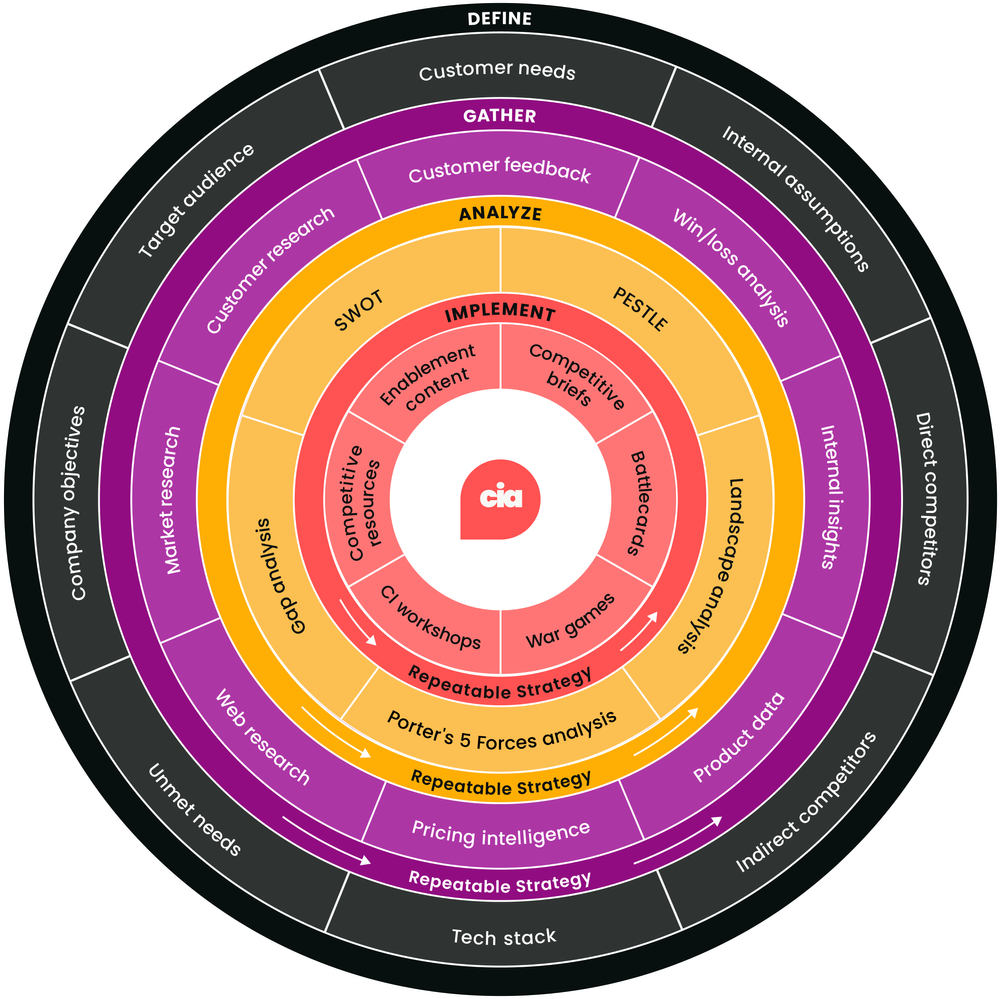
Conclusion
Follow this five-step blueprint, and you'll be equipped with all the processes and sources you need to really get inside your competitors' heads.
By tapping into third-party data troves, chatting with your sales team, studying your competitors' digital footprints, and more, you’ll surface strategic insights that will help your organization get ahead.
Package those insights right, and boom! Your stakeholders will be clamoring for competitive insights that will ultimately inform decisions across the company.
Remember to keep gathering feedback to make your intel better and better, and before you know it, you'll be your team's trusted advisor on all things CI.
Sure, it takes effort. But with this methodology, no stone is left unturned. You'll have the intel you need to stay agile, pounce on trends, and compete with confidence.








.png?v=d2feddaf5b)